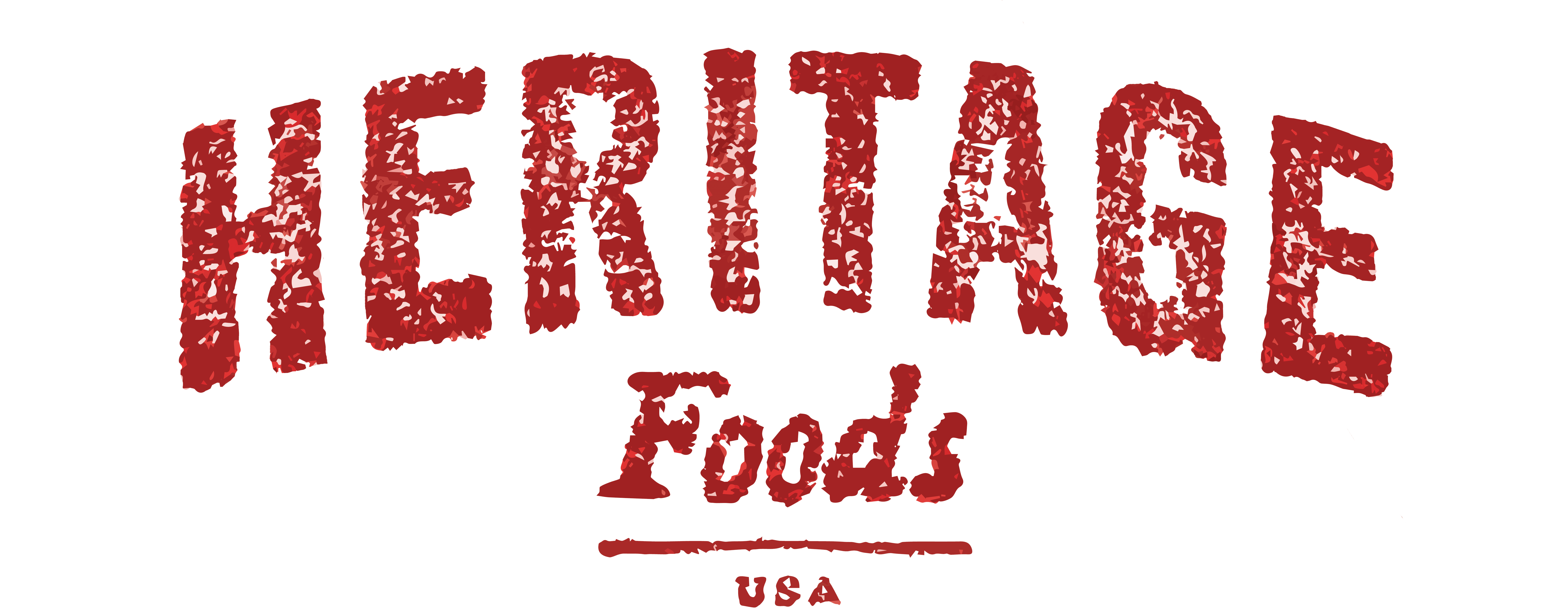Call or email us with any questions at (718) 389-0985 or info@HeritageFoodsUSA.com!
100% Customer Satisfaction Guaranteed | Shop Our Bestsellers!
Orders received by 10am EST ship same day Monday-Thursday, unless otherwise requested.
Call or email us with any questions at (718) 389-0985 or info@HeritageFoodsUSA.com!
100% Customer Satisfaction Guaranteed | Shop Our Bestsellers!
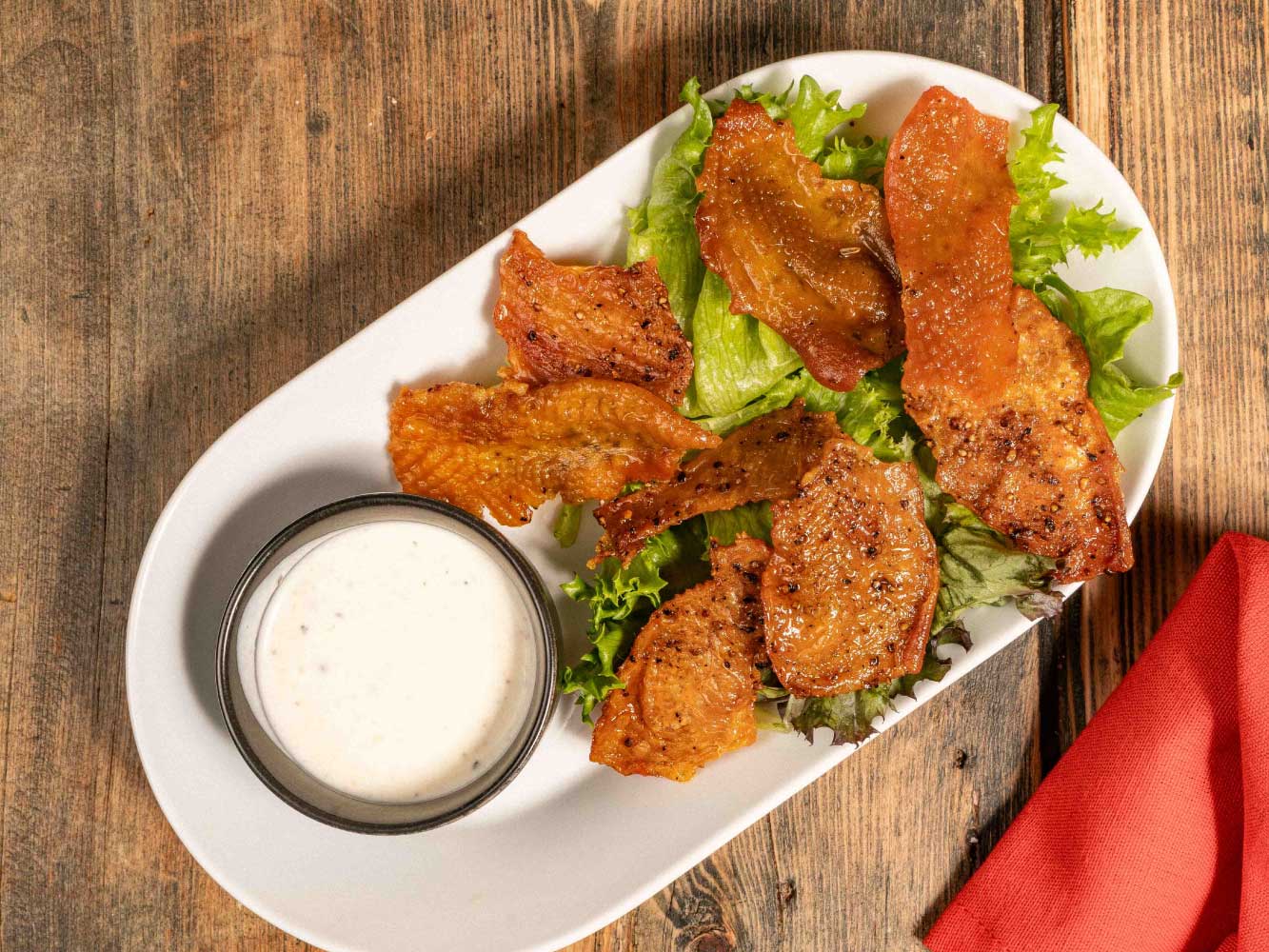
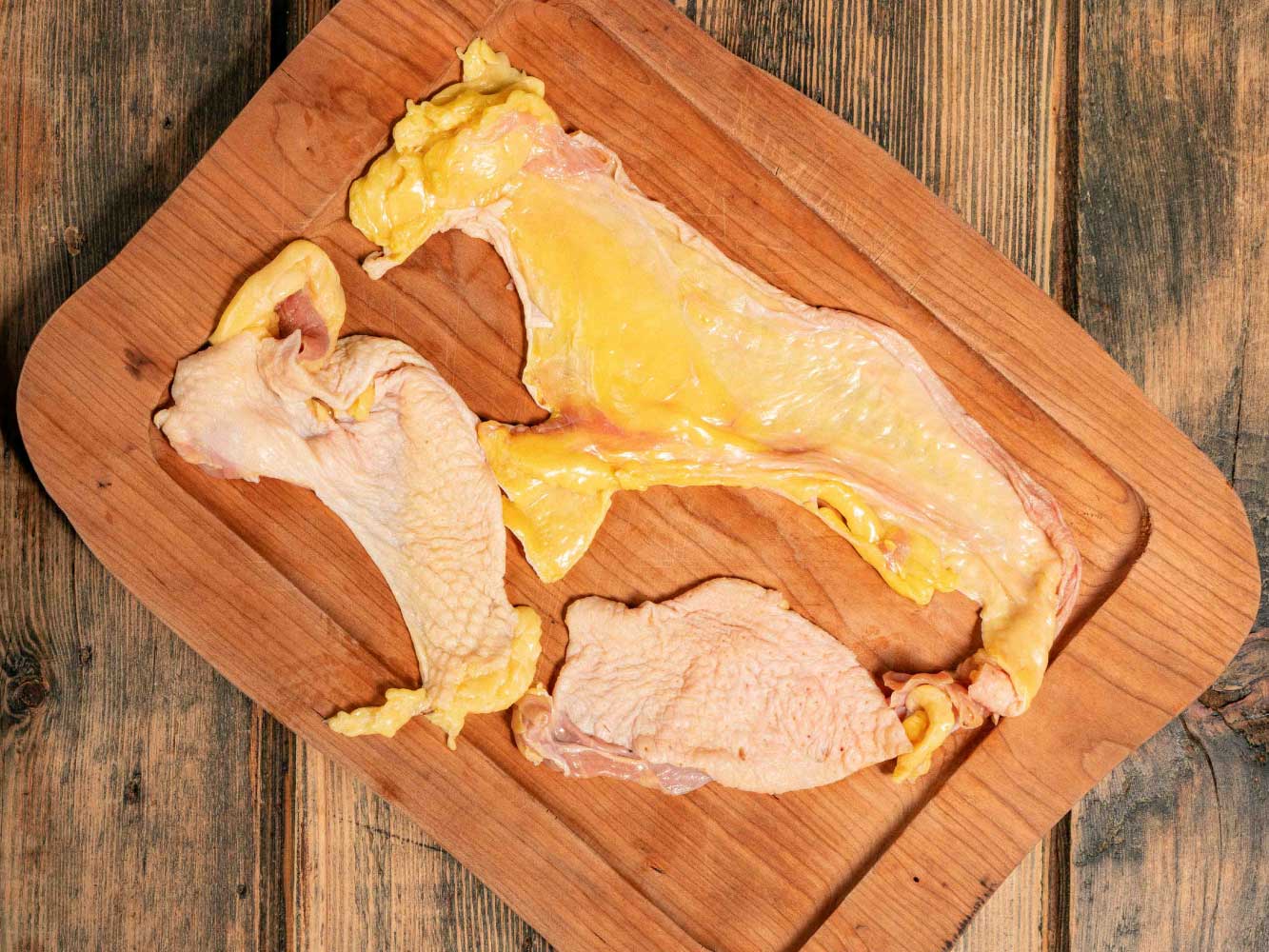
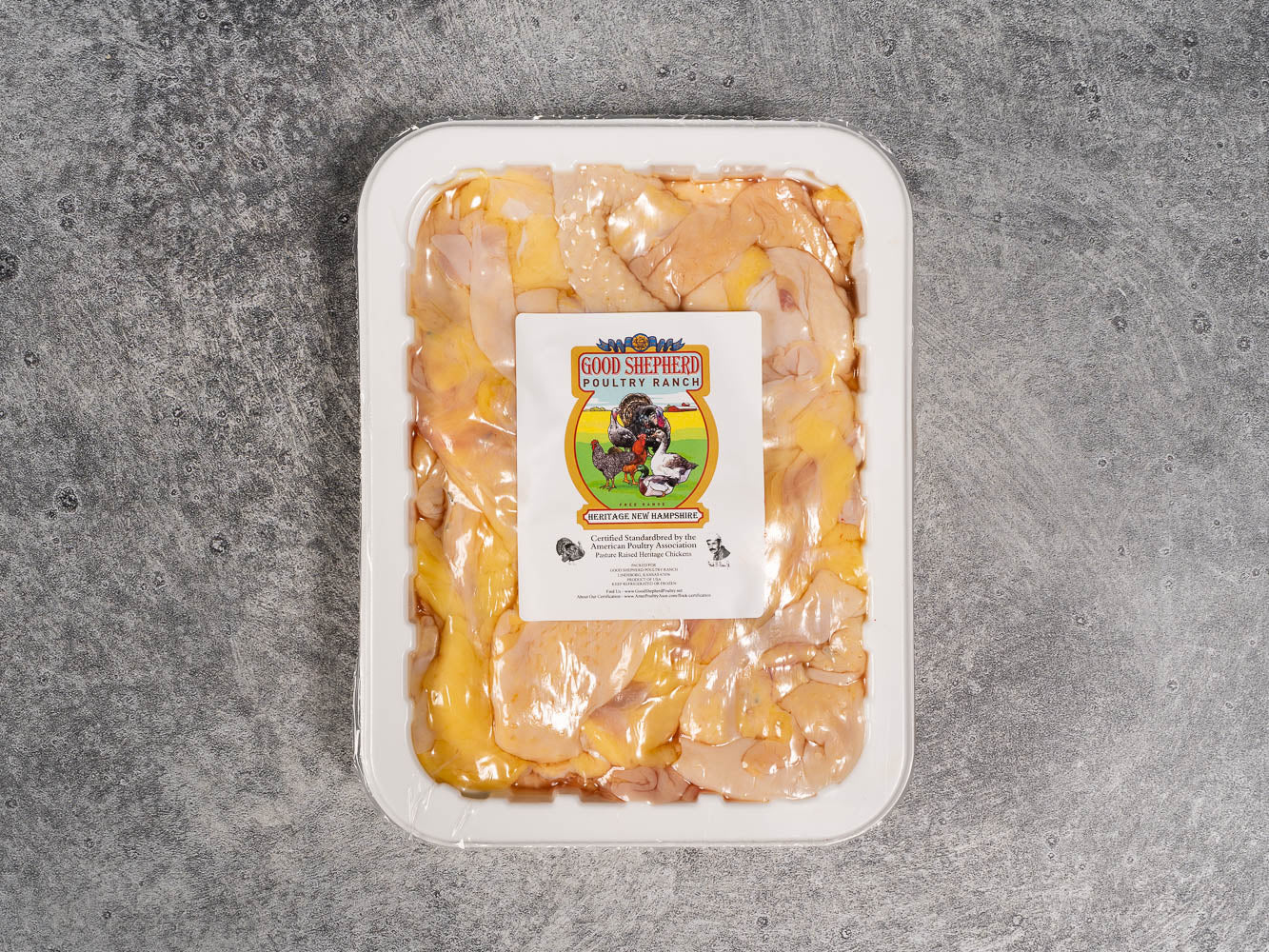
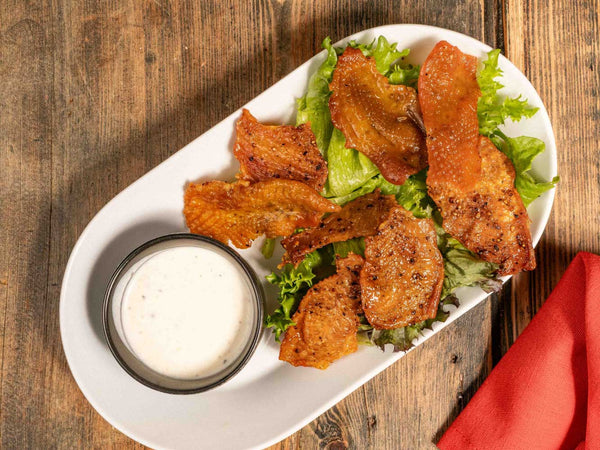
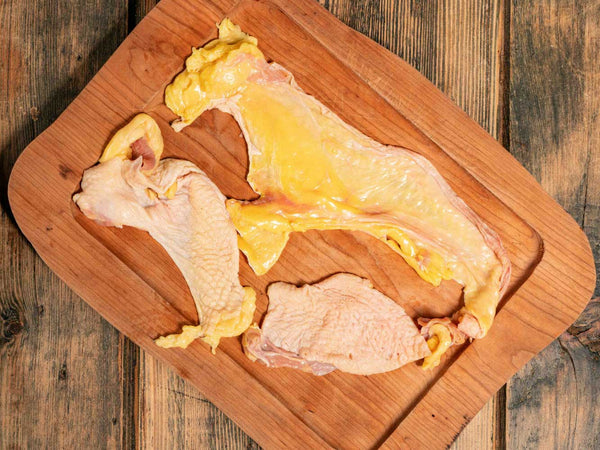
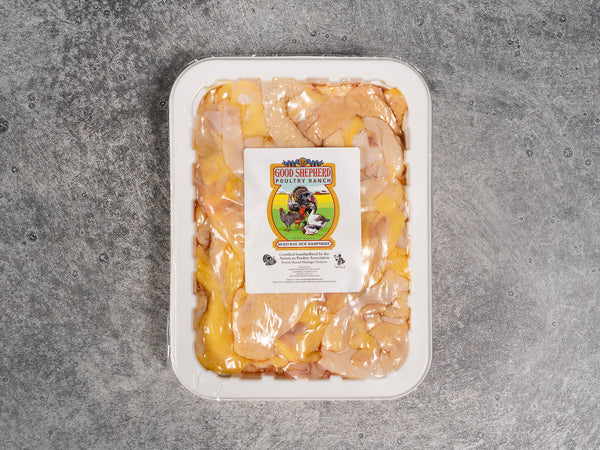



1-2lb total — from heritage chickens raised by the Good Shepherd Poultry Ranch Network
Heritage Chicken Skin
1-2lb total
Plymouth
For crispy chicken chips or wrapping a ballotine.
Kansas-based heritage farmer Frank Reese, who has made it his life’s work to preserve endangered breeds of poultry, has worked for years to maintain stronger lines of chickens. Reese has partnered with his first-ever protégé, Jed Greenberg of Chosen Farms, to raise and process heritage chickens in New Jersey. His flock is the only heritage breed line available online!
“A chicken is no better than the farmer behind it. And the genetics, of course,” says Frank Reese, whose chickens are one of the only flocks in America to receive certification by the American Poultry Association, and the USDA, as 100% purebred Heritage, standards that were set in 1873 to define and defend best practices in American farming.
Good Shepherd Ranch and now, Chosen Farms, are the premier breeders and farms for America’s oldest line of poultry.
Chosen Farms is founded and operated by Jed Greenberg who has worked with Frank Reese at Good Shepherd Poultry Ranch for almost a decade, learning the art and history and skills needed to raise heritage breeds of poultry.
Frank is almost 75 years old and is considered the Godfather of American poultry so Jed plays a pivotal role as he is the one destined (and you could say being bred!) to inherit the responsibility of running the network of what is currently the only heritage breed (Standardbred) hatchery for rare breeds in America.
Jed's New Jersey farm is currently raising exclusively Good Shepherd genetics of chicken, turkey, and guinea fowl. Jed is working to spread heritage breeds to farms across the country as the Director of the Good Shepherd Conservancy of which his farm is a leading member. The Conservancy is working to build a hatching and education center, as well as a museum on the Kansas prairie, ensuring a future for rare breeds around the world.
Your parts come from two breeds:
The New Hampshire breed is a beautifully red-feathered and fast-growing breed that epitomizes American innovation and quality. Prized for its rapid early growth, heavier breast development, and solid egg-laying ability, this newer breed was able to dethrone the Plymouth Rock as America’s #1 chicken in the 1930s.
Created in the 1940s, the Delaware breed is the youngest breed in our preservation program. Originating from the state that provides its name, it is the result of crossing a Barred Rock rooster and New Hampshire hen. This bird carries many of the benefits that made Rocks and New Hampshires favored and also sports a fully white under-fluff and pin feathers.
How to Prepare
Schmaltz can be used in place of butter or vegetable oil in most recipes. It has the richness of an animal product with a higher smoke temperature. This makes it exceptionally good for frying. Using it to make fries, roasted potatoes, potato latkes/kugel, and other potato dishes is very popular traditionally. It is also used to add fat to meat and poultry dishes and in baking in place of lard, suet, or butter.
Chicken fat can be rendered to make schmaltz. Rendered chicken skin is called gribenes. The fat renders quickly. Just chop it up and put it in a pot on medium-low heat. If you are rendering skin or a combination of skin and fat, add the water. The mixture will start to melt very quickly. Take care not to burn the fat during rendering. This can happen easily if you aren't paying close attention, and if it burns the finished product will have a burnt taste as well as an off color. Rendered schmaltz lasts for up to a year in the freezer in our experience.
If you omit onions from the recipe the schmaltz has a much more neutral flavor and can be used to replace butter or lard in sweet or neutral-tasting pastries and desserts. I've used it to make chocolate chip cookies and it worked well.
Ingredients:
2 cups chicken fat and/or skin
1 spanish onion, diced
1/4 cup water (this can be excluded if you are only rendering fat without any skin)
Preparation:
Chop the skin and fat finely, this works well when it is frozen or partially frozen. The smaller you cut the skin, the better the result will be.
Put the fat and skin into a non-stick saucepan, bring to a simmer over high heat and then lower the temperature to low to allow the fat to render without taking on any color.
Give the mixture a stir every 20 minutes or so, depending on your stove temperature, so that it doesn't stick to the bottom of the pan and burn.
Once the fat dissolves and the skin is golden brown, add the onions. Continue to cook until the skin and onions are well browned. This mixture of skin and onions, called gribenes, should be crispy and chewy. After about 90-120 minutes (or longer if you have a larger batch of fat and skin) pour the finished schmaltz fat through a fine-mesh strainer. For very clear fat, line the trainer with cheesecloth.
Store schmaltz in a container with plastic wrap pressed down onto the surface and covered with a lid or second layer of plastic wrap.
© 2025, Heritage Foods Powered by Shopify
